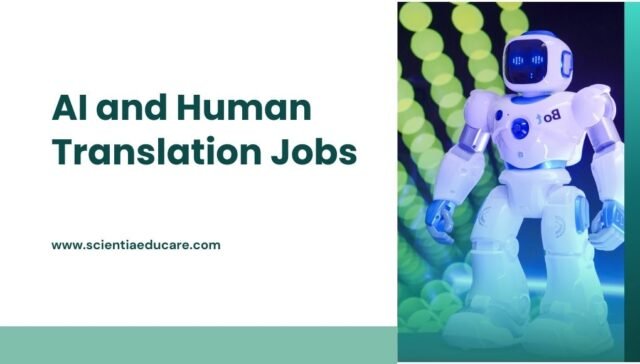The translation industry stands at a pivotal juncture, with artificial intelligence (AI) making significant inroads into language services. This evolution prompts a critical examination of the future landscape for human translators. Will AI render human translators obsolete, or will it serve as a complementary tool, enhancing human capabilities? This article delves into the current state of AI in translation, its implications for human translators, emerging job prospects, and educational pathways for aspiring professionals.
AI integration in translation industry,
Future of human translators in AI era,
Impact of artificial intelligence on translation jobs,
Balancing AI and human translation efforts,
Evolving translation careers with AI technology
The Rise of AI in Translation
AI-powered translation tools, such as Google Translate and DeepL, have become increasingly sophisticated, offering rapid translations across numerous languages. These tools leverage machine learning algorithms trained on vast datasets to provide translations that are often impressively accurate for general content. The allure of instant, cost-effective translations has led many organizations to integrate AI into their workflows.
Limitations of AI in Translation
Despite advancements, AI translations often lack the nuanced understanding of context, cultural subtleties, and idiomatic expressions that human translators provide. In specialized fields like legal, medical, or literary translation, accuracy and cultural sensitivity are paramount, and errors can have significant consequences. AI struggles with these complexities, underscoring the continued need for human expertise.
The Synergy Between AI and Human Translators
Rather than viewing AI as a replacement, many professionals see it as a tool to augment human capabilities. AI can handle repetitive or straightforward translation tasks, allowing human translators to focus on more complex and creative aspects of their work. This collaboration can lead to increased efficiency and the ability to manage larger volumes of work without compromising quality.
Emerging Job Prospects in the Evolving Landscape
The integration of AI into translation is reshaping job roles within the industry. Emerging positions include:
-
Post-Editing Machine Translation (PEMT) Specialist: Professionals who refine and correct AI-generated translations to ensure accuracy and fluency.
-
Localization Expert: Specialists who adapt content to fit cultural and regional nuances, a task that often requires human insight beyond AI’s capabilities.
-
Translation Project Manager: Individuals who oversee projects that combine AI tools and human translators, ensuring seamless integration and quality control.
-
AI Training Data Curator: Experts who develop and manage datasets to train AI translation models, ensuring they are comprehensive and culturally sensitive.
Global Job Opportunities and Resources
The demand for skilled translators and related professionals remains robust worldwide. Notable organizations and platforms offering opportunities include:
-
United Nations: Offers positions for translators and interpreters in various languages.
-
European Union: Regularly recruits translators for its institutions.
-
ProZ.com: A global freelance platform connecting translators with clients.
-
Translators Without Borders: Provides volunteer opportunities that can enhance experience and visibility.
Top Educational Institutions Offering Translation Studies
For those aspiring to enter the field or enhance their skills, several esteemed institutions offer specialized programs:
-
Middlebury Institute of International Studies at Monterey (USA): Renowned for its translation and interpretation programs.
-
University of Geneva (Switzerland): Offers comprehensive courses in translation studies.
-
University of Warwick (UK): Provides specialized master’s programs in translation.
-
Kent State University (USA): Features bachelor’s, master’s, and doctoral programs in translation.
-
Monterey Institute of International Studies (USA): Known for its focus on conference interpretation and translation studies.
Further Reading and Resources
To stay informed about the evolving dynamics of AI and human translation, consider exploring the following resources:
-
“If AI is so good, why are there still so many jobs for translators?” – NPR
-
“Will AI Replace Human Translators?” – ITI Translates
-
“AI and the Future of Translation: Will Machines Take Over or Empower Translators?” – WebProNews
-
“Eight Key Insights from ‘AI and the Future of Translation and Interpretation'” – Middlebury Institute
Conclusion
The future of translation lies in the harmonious integration of AI and human expertise. While AI offers tools that can enhance efficiency, the irreplaceable value of human translators in capturing context, cultural nuances, and emotional depth ensures their continued relevance. By embracing technological advancements and focusing on areas where human insight is indispensable, translators can navigate and thrive in this evolving landscape.














